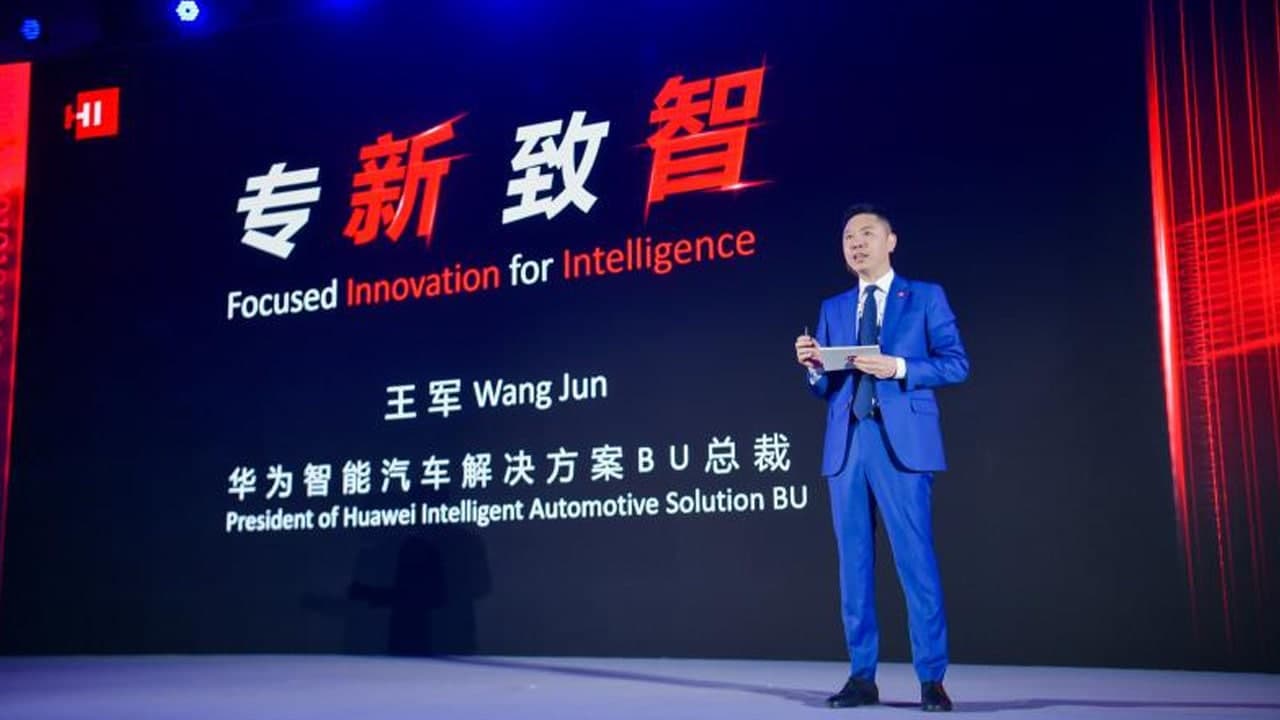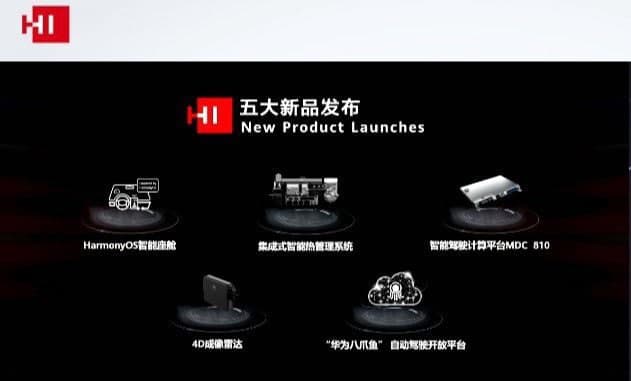Auto
Huawei HI Five New Products Launched: HarmonyOS Cockpit, MDC 810, 4D Imaging Radar, Huawei Octopus and Intelligent Thermal Management System

On 17th April 2021, Huawei’s new Huawei HI technology products including the new electric smart car series, 4D imaging radar, AR-HUD, and MDC 810 has debuted at the Shanghai International Auto Show.
It’s the first time when this Chinese telecom company launched its products at Shanghai Auto Show. This new range of product includes-
- HarmonyOS Cockpit Solution
- AR-HUD
- 4D imaging radar
- MDC 810
- Huawei Octopus
Let’s take a detailed look at these new technologies-
HarmonyOS Smart Cockpit Solution:
This newly improved system works on the HarmonyOS to realize the associated operation between the smartphone and the smart cockpit. It covers many modules like display platforms, software ecosystems, hardware setup, helping automakers, tier-one suppliers, application partners develop services and functions.
Parallelly, the high-end hardware technology such as Kirin 990A chipset, 9 radars + 9 camera setup made the user experience more convenient. In addition, the 20.3-inches 4K car display supports screen switching, captures Air Gesture, and able to restore colors with smooth touch.
AR-HUD:
Huawei’s AR-HUD (Augmented reality- Head-up displays) can easily transform the real-time information to produce spontaneous results. It has only 10L of volume to adjust the projection are in accordance os the human cornea.
It can be reached up to the viewing angle of 13°x 5° to display more clear images. It can work in a range of 7.5 meters with a 70-inch frame.
4D imaging radar:
The 4D imaging radar present by Huawei contains a 12T24R antenna array, which includes 12 transmitting channels and 24 receiving channels. It is 24 times better than the conventional millimeter-wave radar 3T4R antenna.
Simeteniously, it receives about 50% more channels in comparison to the existing imaging radar in the industry. This 4D radar adopts wide-ranged measurement millimeter-wave radars to produce fast results.
Talking about its proficiency, it’s not affected by light, rain, and snow. It has more improved detection capabilities for non-line-of-sight occluded targets, can achieve a 360° detection angle.
To sum up, it satisfies all the user’s demands of the full target, full coverage, multiple working scenarios, and all-weather conditions through a 4D high-density point cloud lidar.
MDC 810:
Huawei MDC 810 (Mobile digital computation) adopts a standard platform-based concept. It is able to achieve the high-stream computing power of 400 TOPs and touched the ASIL D functional safety requirements.
It works on the smart driving software support MDC core system, which includes intelligent driving interface AOS, VOS with a full tool kit meet congestion and other requirements.
There is a vital scope for more development of the whole system in future vehicles.
Huawei Octopus:
The “Huawei Octopus” designed for driverless driving features high-precision location maps and powerful computation algorithms for accurate results. It builds a data-driven closed-loop open platform, which aims to package, label, and upgrade capabilities through the collaborative capabilities of vehicles and clouds. This includes the following modules-
Cloud: According to Huawei, the cloud is the only option for the recognition of driverless driving from development to commercial use. It’s essential for the autonomous driving vehicle to access all clouds nearby to solve the coverage problems.
Precise Maps: Real-time locations are one of the important characteristics for the preciseness of autopiloting. Huawei is capable enough to provide a high-precision map. To date, it’s exclusive to some selected regions, which will be further extended by the company.
Huawei TMS (thermal management system): It’s able to reduce the operating temperature of the heat pump from -10°C to -18°C. This provides a convenient working environment for the integrated design of architecture, components, control integration, and technologies.
It was also revealed that as of now Huawei’s R&D team has about 5,000 plus team members and the R&D investment will be 1 billion US dollars in the auto industry.
(Source)








